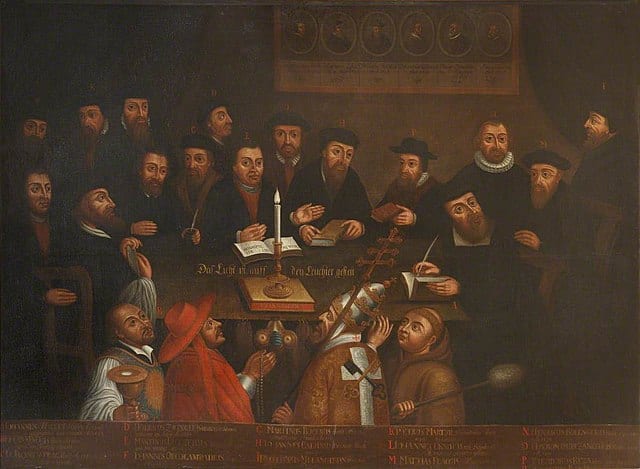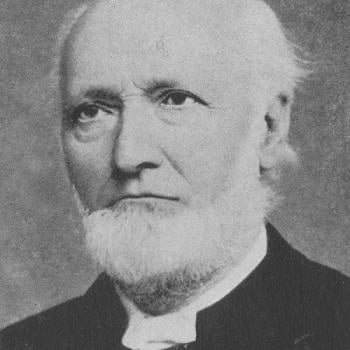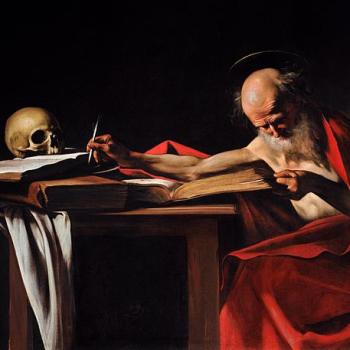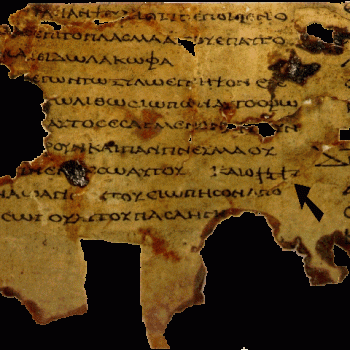And Has Present-Day Protestantism Maintained the Classical “Reformation” Protestant Mariology?

In my 1994 article, Martin Luther Was Extraordinarily Devoted to Mary, I observed:
Luther indeed was quite devoted to Our Lady, and retained most of the traditional Marian doctrines which were held then and now by the Catholic Church. This is often not well-documented in Protestant biographies of Luther and histories of the 16th century, yet it is undeniably true. It seems to be a natural human tendency for latter-day followers to project back onto the founder of a movement their own prevailing viewpoints.
Since Lutheranism today does not possess a very robust Mariology, it is usually assumed that Luther himself had similar opinions. We shall see, upon consulting the primary sources (i.e., Luther’s own writings), that the historical facts are very different. . . .
To summarize, it is apparent that Luther was extraordinarily devoted to the Blessed Virgin Mary, which is notable in light of his aversion to so many other “Papist” or “Romish” doctrines, as he was wont to describe them. . . . His views of Mary as Mother of God and as ever-Virgin were identical to those in Catholicism, and his opinions on the Immaculate Conception, Mary’s “Spiritual Motherhood” and the use of the “Hail Mary” were substantially the same. He didn’t deny the Assumption (he certainly didn’t hesitate to rail against doctrines he opposed!), and venerated Mary in a very touching fashion which, as far as it goes, is not at all contrary to Catholic piety. Therefore, it can be stated without fear of contradiction that Luther’s Mariology is very close to that of the Catholic Church today, far more than it is to the theology of modern-day Lutheranism.
As for Protestant “suppression” of Luther’s Mariology, I will cite just two examples from countless ones that could easily be brought forth. In the standard reference work, The Theology of Martin Luther, by Paul Althaus (translated by Robert C. Schultz, Philadelphia: Fortress Press, 1966), a work of 464 profusely documented pages, no section on Mary appears at all, though there are sections on topics such as, for example, “The People of God,” “The Church as the Community of Saints,” “The Office of the Ministry,” etc., thus showing that the work is rather wide-ranging. Mary cannot even be found in the Index of Names. The closest it gets is “Virgin Birth, dogma of” (p. 464). The author writes in his preface:
My purpose in this book is . . . to present a comprehensive overview of the basic elements of Luther’s theological work . . .
It is my intention that this book systematically present and interpret Luther’s teaching.
Perhaps the key to the omission might be located in the following words:
Luther’s understanding of the gospel remains a vital reality in spite of everything in his theology which reflects the conditions of his times and which we cannot use. (Preface to German edition, v-vi)
It is neither my intention nor purpose to cast aspersions upon professor Althaus’s generally excellent and helpful research. My point is only that current-day Lutherans and Protestants in general emphasize Mariology far less than the “Protestant Reformers” did (Luther, perhaps, above all). I don’t see that this is even arguable. Whether one holds that this reality is a desirable or undesirable change (which is another question: one of theology, orthodoxy, creeds, and confessions), it exists nonetheless.
To assert it as a rather obvious sociological fact (that is, obvious once one is a bit acquainted with the historical background of the development of Protestant thought) is not necessarily to take any particular position on the Mariological disputes in theology. Not all research on these issues has to have polemics and defense of one’s own particular position on theology or history as its motivation.
A similar situation can be found in Williston Walker’s book, John Calvin: The Organiser of Reformed Protestantism (New York: Schocken Books, 1969). In this comprehensive treatment of Calvin’s life and theology (nearly 500 pages), one discovers a single (rather casual) reference to Mary.
The eminent and respected Orthodox (formerly Lutheran) Church historian, Jaroslav Pelikan wrote:
In 1962 Roman Catholic author Walter Tappolet compiled an astonishing compilation of texts from Luther, Calvin, Zwingli, and Bullinger called, The Reformers in Praise of Mary. By going through sermons, devotional material and theological treatises, he documented an enduring orthodoxy of the Mariology of the Reformers. [Mary Through The Ages (New Haven: Yale University Press, 1996), 158, referencing Walter Tappolet, editor, Das Marienlob der Reformatoren (Tubingen: Katzman Verlag, 1962).]
Dr. Pelikan noted the vigorous opposition of early Protestants to idolatry and excesses of the communion of saints — as I also did, in my article above — (much of which was in full agreement with Catholic teaching, rightly understood). But Pelikan maintains that that is not the entire picture of early Protestant Mariology:
[I]t would be a mistake, and one which many interpretations of the Reformation both friendly and hostile have all too easily fallen, to emphasize these negative and polemical aspects of its Mariology at the expense of the positive place the Protestant Reformers assigned to her in their theology. They repeated . . . the central content of the orthodox confession of the first five centuries of Christian history. (Pelikan, ibid., 157)
Pelikan’s opinions are echoed by evangelical David Wright:
[T]he Churches that look back to the Reformers have on the whole been less affirmative about Mary than most of the Reformers themselves. (Chosen by God: Mary in Evangelical Perspective, London: Marshall Pickering, 1989, 123)
Likewise, Catholic writer William J. Cole observes:
[Luther’s] custom of preaching Marian sermons on the Marian feasts continued in the Lutheran Church a hundred years after his death. Following the example of Luther other great songwriters of the Reformation glorified the greatness of Mary’s divine maternity. This lasting piety towards the Mother of God found an outlet in piety so that generally the celebrated pictures of the Madonna and her statues from the Middle Ages were retained in Lutheran churches. According to Heiler, it was only the spirit of the Enlightenment with its lack of understanding of the mystery of the Incarnation, which in the 18th century began the work of destruction. (“Was Luther a Devotee of Mary?,” Marian Studies, 21, 1970, 101-102)
[T]he Reformer preached more about Mary than Catholic priests do in this era of the Church’s history. (Ibid., 182)
The Catholic scholar Thomas A. O’Meara stated:
It was the times with their changes in intellectual and cultural outlook, it was the very history of the Reform with its forgetfulness of the fullness of its Lutheran and Calvinist inheritance, which caused a Christian religion to come into existence without any place for Christ’s Mother. We should remember that this was not the view of the Reformers, nor is it intrinsic to Protestantism. (Mary in Protestant and Catholic Thought, New York: Sheed & Ward, 1966, 137)
David Wright (who freely and vigorously criticizes various aspects of Catholic Mariology) applies the belief in Mary’s perpetual virginity to the early Protestant leaders generally, noting:
[T]he long-established universal belief in Mary’s perpetual virginity, which was endorsed by all the Reformers virtually without qualification. (Wright, ibid., 169)
Wright observes, furthermore, that “the English Reformers probably to a man shared [the] conviction of Mary’s perpetual virginity” (Ibid., 172). He states that Hugh Latimer, Miles Coverdale, Robert Barnes, and Thomas Cranmer all accepted the doctrine of Mary’s perpetual virginity, and that Cranmer thought it was proven from Scripture. Hugh Latimer also strongly held to Mary’s immaculate conception [Wright, ibid., 174]. Many, if not most Protestants today deny the perpetual virginity of Mary, but it was standard belief among the leaders of early Protestantism (and even later prominent figures such as John Wesley). See also, my paper: Perpetual Virginity of Mary: Held by All Protestant Reformers.
The famous Swiss Protestant theologian Karl Barth wrote:
As Christians and theologians, we do not reject the description of Mary as the “Mother of God,” but in spite of its being overloaded by the so-called Mariology of the Roman Catholic Church, we affirm and approve of it as a legitimate expression of Christological truth. . . . The description of Mary as the “Mother of God” was and is sensible, permissible and necessary as an auxiliary Christological proposition. (Church Dogmatics, I, 2, Edinburgh: T. & T. Clark, 1963, 138)
The Protestant Reformed scholar Max Thurian observed:
Whatever may be the position theologically that one may take today on the subject of Mariology, one is not able to call to one’s aid “reformed tradition” unless one does it with the greatest care . . . the Marian doctrine of the Reformers is consonant with the great tradition of the Church in all the essentials and with that of the Fathers of the first centuries in particular . . .
In regard to the Marian doctrine of the Reformers, we have already seen how unanimous they are in all that concerns Mary’s holiness and perpetual virginity. Whatever the theological position which we may hold today, in regard to the Immaculate Conception and Assumption of Mary it is right to know, perhaps to our great surprise, that these two Catholic dogmas were accepted by certain Reformers, not of course in their present form but certainly in the form that was current in their day. (Mary: Mother of all Christians, translated by Neville B. Cryer, New York: Herder & Herder, 1963, 77, 197)
The well-known Lutheran theologian Friedrich Heiler thought that the Marian doctrines were greatly minimized or abandoned by later Protestants because of:
. . . the spirit of the enlightenment with its lack of understanding of mystery, and especially of the mystery of the Incarnation, which in the 18th century began the work of destruction. (“Die Gottesmutter im Glauben und Beten der Jahrhunderte,” Hochkirche 13 [1931], 200)
Another Lutheran scholar, Basilea Schlink, believes that:
[T]he majority of us have drifted away from the proper attitude towards her, which Martin Luther had indicated to us on the basis of Holy Scripture … [partially due to the rise of Rationalism which] has lost the sense of the sacred. In Rationalism man sought to comprehend everything, and that which he could not comprehend he rejected. Because Rationalism accepted only that which could be explained rationally, Church festivals in honor of Mary and everything else reminiscent of her were done away with in the Protestant Church. All biblical relationship to the Mother Mary was lost, and we are still suffering from this heritage.
When Martin Luther bids us to praise the Mother Mary, declaring that she can never be praised enough as the noblest lady and, after Christ, the fairest gem in Christendom, I must confess that for many years I was one of those who had not done so, although Scripture says that henceforth all generations would call Mary blessed [Luke 1:48]. I had not taken my place among these generations. (Mary, the Mother of Jesus, London: Marshall Pickering, 1986, 114-115)
And the Anglican A. Lancashire states:
A rejection of Mariology must inevitably lead to a rejection of orthodox Christology. … Devotion to Mary, far from leading men away from Christ, draws the Church into a deeper recognition of the mystery of God’s loving activity directed towards man in Christ. (Born of the Virgin Mary, London: The Faith Press, 1962, 142-143)
To give the reader unacquainted with this line of inquiry a flavor of the robust early Protestant Marian piety, I will cite the words of one of the major Protestant “Reformers,” Heinrich Bullinger (1504-1575), successor to Zwingli and author of the Second Helvetic Confession:
In Mary everything is extraordinary and all the more glorious as it has sprung from pure faith and burning love of God. . . . the most unique and the noblest member of the Christian community . . . The Virgin Mary . . . completely sanctified by the grace and blood of her only Son and abundantly endowed by the gift of the Holy Spirit and preferred to all . . . now lives happily with Christ in heaven and is called and remains ever-Virgin and Mother of God. (in Hilda Graef, Mary: A History of Doctrine and Devotion, combined edition of volumes 1 & 2, London: Sheed & Ward, 1965, vol. 2, 14-15)
What pre-eminence in the eyes of God the Virgin Mary had on account of her piety, her faith, her purity, her saintliness and all her virtues, so that she can hardly be compared with any of the other saints, but should by rights be rather elevated above all of them, appears very clearly in the first chapters of the gospels of St. Matthew and St. Luke, and particularly in her Magnificat . . . If Mary really is the Mother of the Lord, . . . then it is altogether just that she should be named by the Fathers of the Church theotokos, that is to say Mother of God. Nestorius denied that in the most infamous manner . . . She . . . surpasses with distinction all women. (in Thurian, ibid., 89 / Uber die Selige Jungfrau, May 18, 1558)
Elijah was transported body and soul in a chariot of fire; he was not buried in any Church bearing his name, but mounted up to heaven, so that . . .we might know what immortality and recompense God prepares for his faithful prophets and for his most outstanding and incomparable creatures . . . It is for this reason, we believe, that the pure and immaculate embodiment of the Mother of God, the Virgin Mary, the Temple of the Holy Spirit, that is to say her saintly body, was carried up to heaven by the angels. (in Thurian, ibid., 197-198 / De origine erroris, 16, written in 1568)
Zurich during Zwingli’s tenure continued to observe the Feast of the Assumption on August 15th (Acts of the Council in March 1526 and March 1530; see Thurian, ibid., p. 186).
Protestant author Peter Toon offers a strikingly wistful reflection:
I must confess that I am deeply impressed by the way in which some of my favorite writers: Bernard, Francis de Sales, Anselm, and moderns like Hans Urs von Balthasar, have both a profound love for our Lord and a special love for Mary. Take for example this extract from a prayer of Anselm: “Surely Jesus, Son of God, and Mary His Mother, you both want, and it is only right, that whatever you love, we should love too. So, good Son, I ask you through the love you have for your Mother, that as she truly loves you and you her, you will grant that I may truly love her. Good Mother, I ask you by the love you have for your Son, that, as He truly loves you and you Him, you will grant that I may love Him truly.” . . . I ask myself: Why cannot I pray in this manner? Is there something lacking in my theological and spiritual appreciation that prevents me from regarding Mary in this way? And as yet I have found no satisfactory answers to my questions . . . In the joyful celebration of Mary, we hear, confess and believe the truth that God has taken the initiative for our salvation. Mary is a continuing witness to the divine initiative. She expressed sola gratia, ‘by grace alone’, in a dynamic and compelling way. (“Appreciating Mary Today,” in Chosen by God: Mary in Evangelical Perspective, edited by David F. Wright, London: Marshall Pickering, 1989, 225-226)
Elliot Miller, of the evangelical Christian Research Institute (founded by the eminent cult researcher, the late Dr. Walter Martin), confesses:
[I]t is regrettably true that some Protestants — no doubt in reaction to Catholic excesses — have almost forgotten Mary. This is no more the will of God than it would be for Christians to ignore Moses, John the Baptist, or the apostles Paul, Peter, and John. . . . In other words, while Mary is not exalted above every other created being in the Bible, she is one of the most important figures found in it. ‘Blessed among women,’ she is the preeminent feminine model of faith and obedience; worthy of honor and admiration. (“The Mary of Roman Catholicism,” Christian Research Journal, Summer 1990: 9-15; Fall 1990: 27-33; quote from p. 33)
Evangelical Protestant John De Satge makes a remarkable statement on Mary from a Protestant perspective:
[A] proper relationship with our Lord’s Mother safeguards the conditions essential for evangelical religion, the heart of which is to know Christ as your Savior . . . If evangelical religion is not to be merely metaphor or sentiment or coziness, it must say things about the Savior which mean that though He is fully human and our Brother, He is a great deal more besides. And those are the very things that lead us to call His Mother the Mother of God. The things which Catholics say about Mary safeguard the things which Evangelicals say about her Son . . . Proper Marian devotion, on the contrary, opens up further reaches of experience to the searching and the succor of the Gospel . . . Once the Catholic Church has reordered its house, the time for protest is past and the evangelical should go home as soon as may be. I believe that, in Marian matters at least, that point has been reached. The task before those who believe as I do is to help our fellow-heirs of the Reformation appreciate that which they had previously denied . . . It seems to me that our Lady stands in the life of her Son’s people as a gracious hostess, making one free of large rooms which hitherto had been closed or dark and forbidding. She is supremely fitted to do this, being wholly one of us and wholly yielded to God, the Mother of God who through grace is the daughter of her Son. May evangelicals who rejoice in her Son’s Gospel take their proper share in calling her “blessed,” who accepted so fully that grace by which they live. (“The Evangelical Mary,” in Mary’s Place in Christian Dialogue, edited by Alberic Stacpoole, Slough, England: St. Paul Publications, 1982, 25-33)
Thomas Howard writes about Mary eloquently, from a Catholic perspective (this was written in the year before he was received into the Church, as an Anglican):
A parsimonious notion of God’s glory has been one result of the revulsion felt by so many over the honour paid to Mary, as though to say, If God alone is all-glorious, then no one else is glorious at all. No exaltation may be admitted for any other creature, since this would endanger the exclusive prerogative of God.
But this is to imagine a paltry court. What king surrounds himself with warped, dwarfish, worthless creatures? The more glorious the king, the more glorious are the titles and honors he bestows . . . He is a very great king, to have figures of such immense dignity in his train, or even better, to have raised them to such dignity. These great lords and ladies, mantled and crowned with the highest possible honor and rank are, precisely, his vassals. This glittering array is his court! All glory to him and, in him, glory and honor to these others.
We know all this from reading about the courts of great kings in our own history. We also know it of God, who is attended by creatures of such burning splendor that we can scarcely imagine them: angels, archangels, virtues, thrones, dominations, princedoms, powers, and then the terrible cherubim, and finally the seraphim themselves . . .
There is one whose dignity is shared by no other. She is a woman, the humblest of them all. No empress, prophetess, or conqueror she, only the handmaid of the Lord. But in her exaltation we see the divine magnanimity, which has regarded the lowliness of His handmaiden and has exalted the humble and meek . . . ‘Magnificat!’ she sings, and ‘Hail!’ we answer, in the joyful courtesies of heaven.
The Christian piety that has been afraid almost to name, much less to hail, the Virgin and to join the angel Gabriel and Elisabeth in according blessing and exaltation to her is a piety that has impoverished itself. Stalwart for the glory of God alone, it has been afraid to see the amplitude of that glory, which brims and overflows and splashes outward in a surging golden tide, gilding everything that it touches . . .
We are taught by Scripture that nothing may be worshiped but God alone. The ancient Church has always taught this, reserving for God alone the honor known as ‘latria’. But, below this worship paid to the Most High, there is a whole scale of exultation and exaltation that rejoices in the plenitude of the divine glory and leaps to hail every creature in whom that glory is seen.
A Christian devotion afraid to join the angel of God in hailing the Virgin as highly exalted is a devotion cramped either by ignorance or fear. (Evangelical is Not Enough, Nashville: Nelson, 1984, 87-89)
One of my favorite utterances from Martin Luther about Mary nicely complements the words of Thomas Howard:
She became the Mother of God, in which work so many and such great good things are bestowed on her as pass man’s understanding. For on this there follows all honor, all blessedness, and her unique place in the whole of mankind, among which she has no equal, namely, that she had a child by the Father in heaven, and such a Child . . . Hence men have crowded all her glory into a single word, calling her the Mother of God . . . None can say of her nor announce to her greater things, even though he had as many tongues as the earth possesses flowers and blades of grass: the sky, stars; and the sea, grains of sand. It needs to be pondered in the heart what it means to be the Mother of God. (Commentary on the Magnificat, 1521; in Luther’s Works, Pelikan et al, vol. 21, 326)
Some important recent books on Mary by Protestant Christians are Mary for all Christians, by John Macquarrie (Anglican); Down to Earth: The New Protestant Vision of the Virgin Mary, by John de Satge (Evangelical); A Protestant Pastor Looks at Mary, by Charles Dickson (Lutheran), Five for Sorrow, Ten for Joy, by Neville Ward (Methodist), I Sing of a Maiden, by Roger Greenacre (Anglican), Wallington, England: Ecumenical Society of the Blessed Virgin Mary, 1992, and The One Mediator, the Saints, and Mary, edited by H. George Anderson, et al, Minneapolis: Augsburg Fortress Press, 1992 (especially Eric W. Gritsch, “The Views of Luther and Lutheranism on the Veneration of Mary,” pp. 235-241, and Gerhard O. Forde, “Is the Invocation of Saints an Adiaphoron?,” pp. 327-338).
Jaroslav Pelikan further states, regarding the Lutheran Confessions:
Even in the only confessional statement of faith by him that was officially adopted by the Lutheran church and incorporated into the official collection of the Book of Concord of 1580 . . . – the Smalcald Articles of 1537, the Latin text contained the words (which did not, however, appear in the German version): “from Mary, pure, holy, and Ever-Virgin [ex Maria pura, sancta, Semper Virgine].” (Mary Through The Ages, New Haven: Yale University Press, 1996, 159; footnote #32: Smalcald Articles, I,4, in Die Bekenntnisschriften der evangelisch-lutherischen Kirche, Gottingen: Vandenhoeck und Ruprecht, 1952, 414)
Since the German editions of this work omitted the Marian reference (why, I wonder?), I was curious to see what route the English translations took. The version of the Book of Concord in my own library was translated and edited by Theodore G. Tappert, in collaboration with Jaroslav Pelikan, Robert H. Fischer, and Arthur C. Piepkorn (St. Louis: Concordia Publishing House / Muhlenberg Press, 1959). The phrase indeed appears on pages 291-292:
4. That the Son became man in this manner: he was conceived by the Holy Spirit, without the cooperation of man, and was born of the pure, holy, and virgin Mary.
The Formula of Concord (1577), binding on Lutherans, translated in this edition by Arthur C. Piepkorn, states in the Solid Declaration, Article VIII: The Person of Christ, section 9 (p. 595):
On account of this personal union and communion of the natures, Mary, the most blessed virgin, did not conceive a mere, ordinary human being, but a human being who is truly the Son of the most high God, as the angel testifies. He demonstrated his divine majesty even in his mother’s womb in that he was born of a virgin without violating her virginity. Therefore she is truly the mother of God and yet remained a virgin.
Likewise, in its Epitome, Article VIII: The Person of Christ, section 7 (page 488):
Therefore we believe, teach, and confess that Mary conceived and bore not only a plain, ordinary, mere man but the veritable Son of God; for this reason she is rightly called, and truly is, the mother of God. (footnote 5: Against the views ascribed to Nestorius it was asserted that Mary is theotokos)
Furthermore, additional striking Marian statements occur in the Apology of the Augsburg Confession, written by Luther’s successor Philip Melanchthon and published in May, 1531 — itself also part of the official confession of faith of Lutheranism. The editors of the version I have write: “The translation which follows is made from the Latin original. Variants in the German version, a very free translation which has been called a ‘pious paraphrase,’ are not included” (page 98):
Granted that blessed Mary prays for the church, does she receive souls in death, does she overcome death, does she give life? What does Christ do if blessed Mary does all this? Even though she is worthy of the highest honors, she does not want to be put on the same level as Christ but to have her example considered and followed. The fact of the matter is that in popular estimation the blessed Virgin has completely replaced Christ. (Article XXI: Invocation of Saints; pp. 232-233)
Note that Melanchthon decries the “popular estimation” of Mary and corrupt practices. Indeed these occurred, and continue to in some bizarre, fringe, heterodox circles (one can certainly argue about the extent of such corruptions in the Middle Ages and currently). He does not cite an official Catholic document which would contradict the above, for one simple reason: none exists. Orthodox Catholics agree with this statement (then and now, and always). For examples of how Protestants today — and often throughout history –, have grossly misinterpreted and mischaracterized even orthodox Catholic Marian piety, see my paper: St. Alphonsus de Liguori: Mary-Worshiper & Idolater?
Some elements of Martin Luther’s Mariology were either rejected or minimized later in his life. I have often noted, in my papers about Luther, his tendency to contradict himself or vacillate, and the difficulty of constructing a coherent account of his beliefs. Luther’s thought was the very antithesis of the systematic and orderly teaching of, say, John Calvin. This is a problem for all students of Luther. I was already noting in my 1994 paper on Luther’s Mariology, aspects of it that departed from Catholicism:
Concerning this question [Mary’s Immaculate Conception] there is some dispute, over the technical aspects of medieval theories of conception and the soul, and whether or not Luther later changed his mind. [I personally think he did in some respects]. Even some eminent Lutheran scholars, however, such as Arthur Carl Piepkorn (1907-73) of Concordia Seminary in St. Louis, maintain his unswerving acceptance of the doctrine . . . In later life (he died in 1546), Luther did not believe that this doctrine should be imposed on all believers, since he felt that the Bible didn’t explicitly and formally teach it. Such a view is consistent with his notion of sola Scriptura and is similar to his opinion on the bodily Assumption of the Virgin, which he never denied — although he was highly critical of what he felt were excesses in the celebration of this Feast.
Luther did strongly condemn any devotional practices which implied that Mary was in any way equal to our Lord or that she took anything away from His sole sufficiency as our Savior. This is, and always has been, the official teaching of the Catholic Church. Unfortunately, Luther often “threw out the baby with the bath water,” when it came to criticizing erroneous emphases and opinions which were prevalent in his time — falsely equating them with Church doctrine. His attitude towards the use of the “Hail Mary” prayer (the first portion of the Rosary) is illustrative. In certain polemical utterances he appears to condemn its recitation altogether, but he is only forbidding a use of Marian devotions apart from heartfelt faith, . . .
His major departure occurs with regard to the intercession and invocation of the saints, which he denied, in accord with the earliest systematic Lutheran creed, the Augsburg Confession of 1530 (Article 21).
***
(from material originally posted on 4-26-03; edited and rearranged on 7-15-20)
Photo credit: The Protestant Reformers (c. 1610), unknown painter [public domain / Wikimedia Commons]
***













